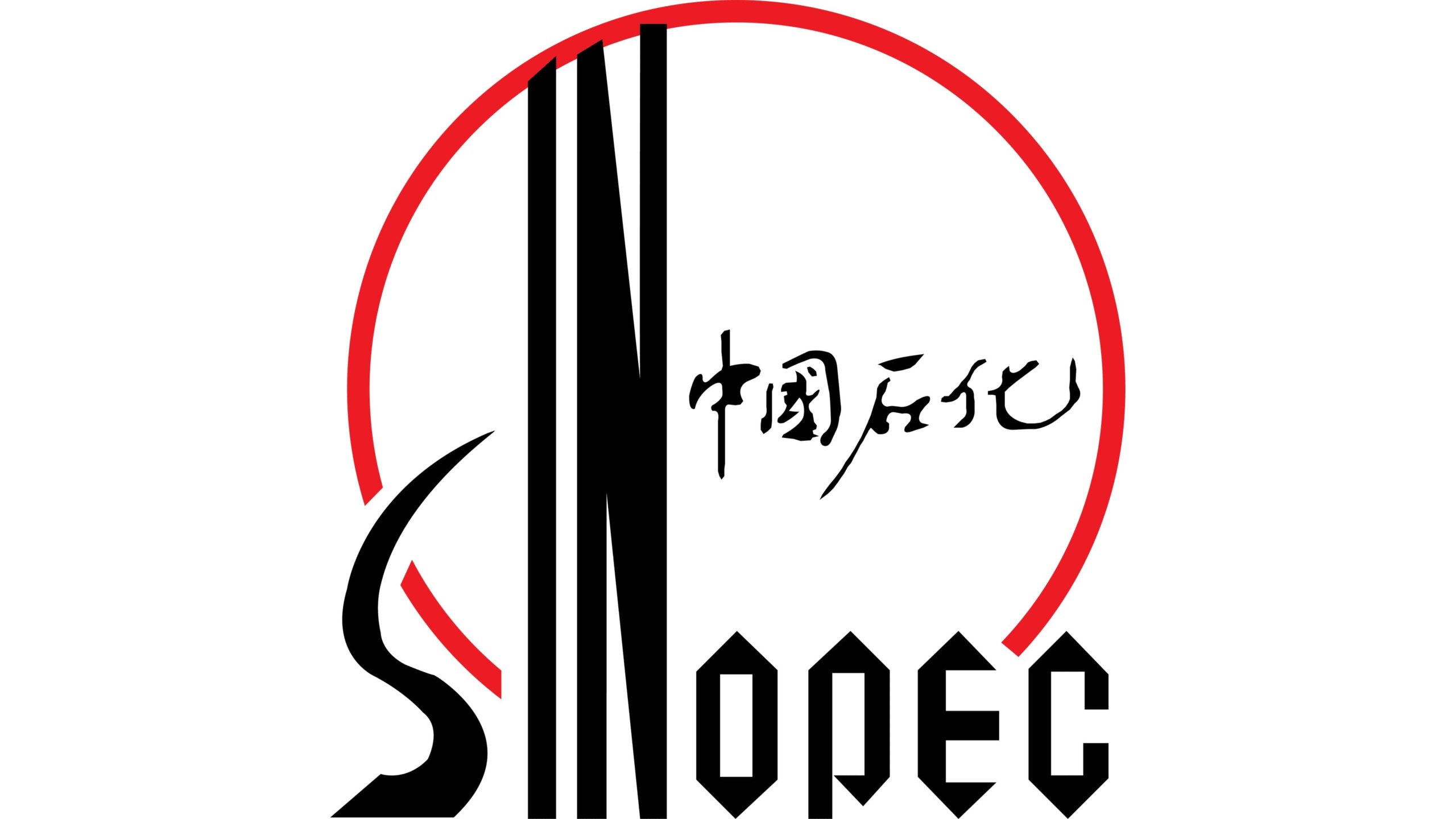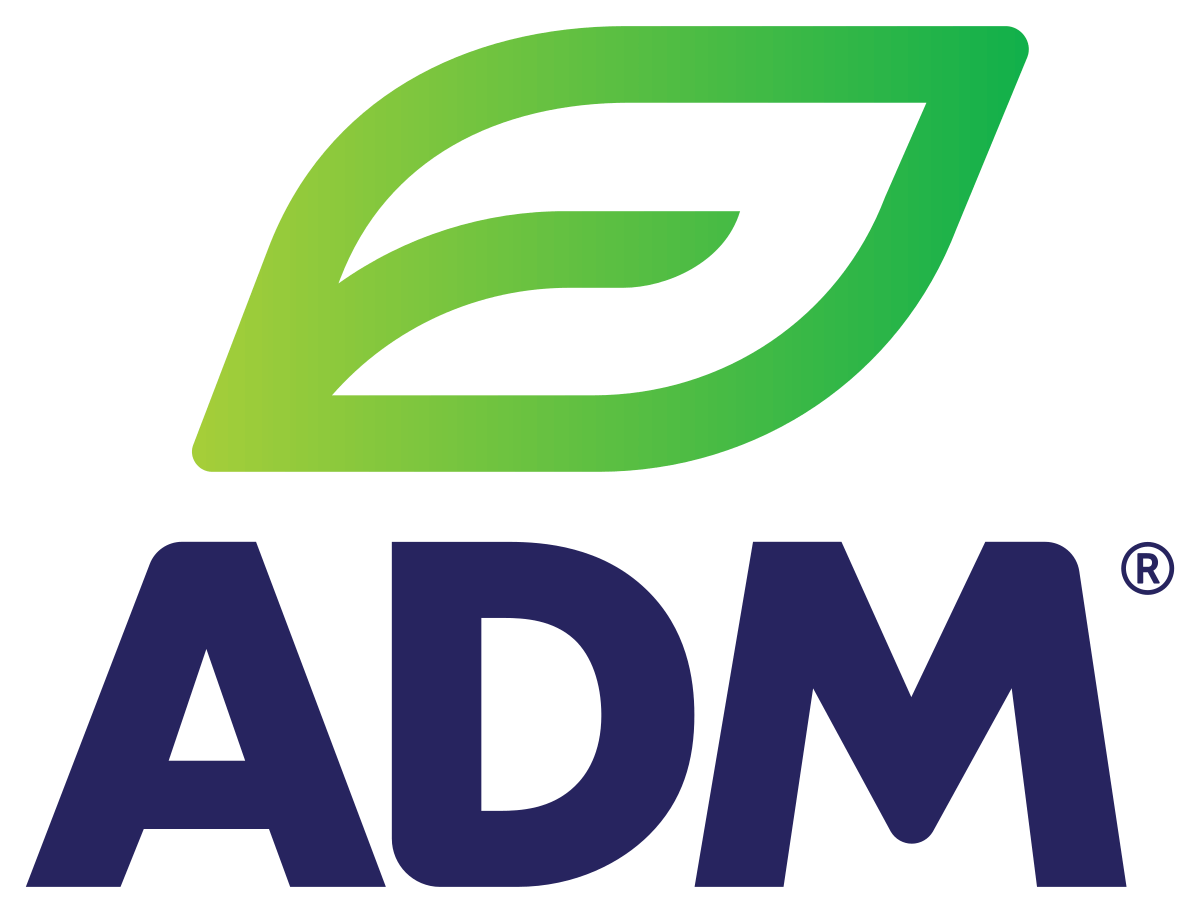Global Sustainable Adhesives Market By Type, By Bonding Technology, By End Use Industry, By Region & Segmental Insights Trends and Forecast, 2024 – 2034
- Industry: Chemicals & Materials
- Report ID: TNR-110-1240
- Number of Pages: 420
- Table/Charts : Yes
- August, 2024
- Base Year : 2024
- No. of Companies : 10+
- No. of Countries : 29
- Views : 10057
- Covid Impact Covered: Yes
- War Impact Covered: Yes
- Formats : PDF, Excel, PPT
The global sustainable adhesives market is experiencing significant growth, driven by increasing environmental concerns and stringent regulations promoting eco-friendly solutions. Industries are shifting towards adhesives that reduce carbon footprints and minimize volatile organic compound (VOC) emissions. Key sectors such as packaging, construction, and automotive are adopting sustainable adhesives due to their low environmental impact and performance benefits.
Technological advancements, particularly in bio-based and water-based adhesives, are enhancing product offerings and expanding market potential. North America and Europe are leading the market, fueled by strong regulatory frameworks and consumer demand for green products. The market is expected to continue its upward trajectory as sustainability becomes a core focus across various industries worldwide. In terms of revenue, the global sustainable adhesives market was worth US$ 2.17 Bn in 2023, anticipated to witness a CAGR of 6.3% during 2024 – 2034.
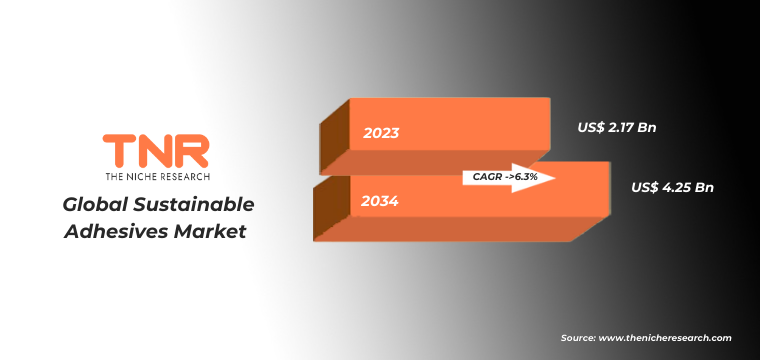
Global Sustainable Adhesives Market Segmental Analysis:
Sustainable Adhesives Market By Type
Solvent-based segment has rapidly emerged as the fastest-growing segment in the global sustainable adhesives market, driven by advancements in formulation technology that significantly reduce volatile organic compound (VOC) emissions. These innovations align with stringent environmental regulations and growing demand for sustainable products, particularly in industries like automotive, construction, and packaging. Enhanced performance characteristics, such as strong adhesion and durability, make solvent-based adhesives suitable for high-stress applications. Additionally, increased investment in research and development has led to the creation of eco-friendly solvent-based adhesives derived from renewable resources, further propelling their adoption across diverse sectors seeking to balance performance with environmental responsibility.

Sustainable Adhesives Market By Bonding Technology
In 2023, the reactive technology segment dominated the global sustainable adhesives market, capturing a substantial revenue share of 69.7%. This dominance is attributed to the superior bonding strength and durability of reactive adhesives, making them essential in demanding applications across industries such as automotive, construction, and electronics. Their ability to form robust, long-lasting bonds through chemical reactions ensures high performance under various environmental conditions. Additionally, ongoing innovations in reducing the environmental impact of reactive adhesives, including the development of low-VOC and bio-based formulations, have further fueled their adoption. As industries increasingly prioritize sustainability without compromising on performance, the reactive technology segment continues to lead the market.
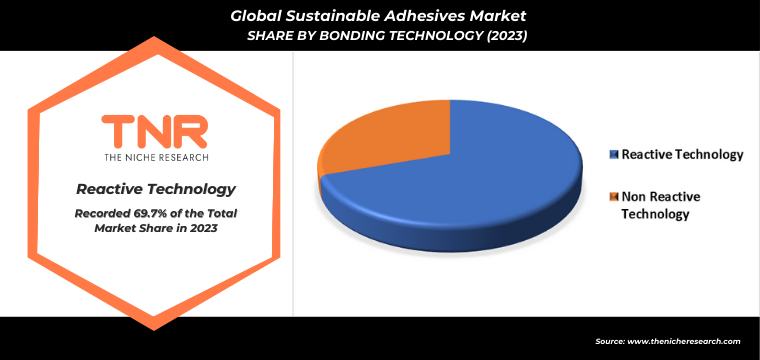
Sustainable Adhesives Market By End Use Industry
Packaging emerged as the dominant segment in the global sustainable adhesives market in 2023, capturing a significant revenue share of 20.1%. This growth is driven by the packaging industry’s shift towards eco-friendly materials, driven by consumer demand for sustainable products and stringent environmental regulations. Sustainable adhesives play a crucial role in reducing the carbon footprint of packaging, offering strong, reliable bonds for various materials while minimizing environmental impact. With the rise of e-commerce and the growing emphasis on recyclable and biodegradable packaging solutions, the demand for sustainable adhesives in this sector continues to soar, solidifying its leading position in the market.
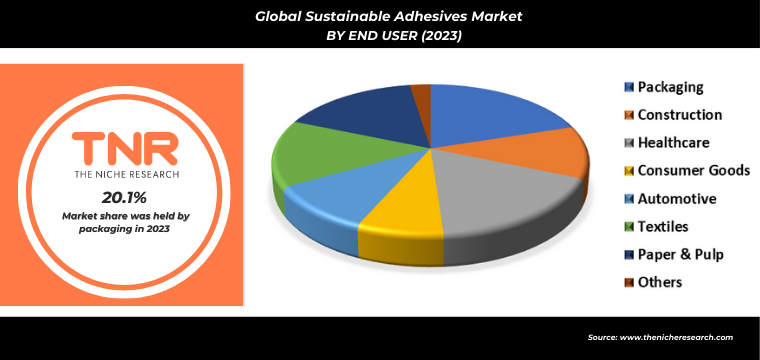
Sustainable Adhesives Market By Region
North America is projected to be the fastest-growing region in the sustainable adhesives market during the forecast period, driven by increasing regulatory pressures and consumer demand for environmentally friendly products. The region’s robust industrial base, particularly in packaging, automotive, and construction, is increasingly adopting sustainable adhesives to meet stringent environmental standards. Additionally, advancements in bio-based and low-VOC adhesive technologies are gaining traction, supported by strong R&D investments. Major companies are focusing on eco-friendly innovations to align with sustainability goals, further boosting market growth. The growing emphasis on green building practices and the rise of e-commerce packaging are also key factors contributing to North America’s rapid expansion in this market.
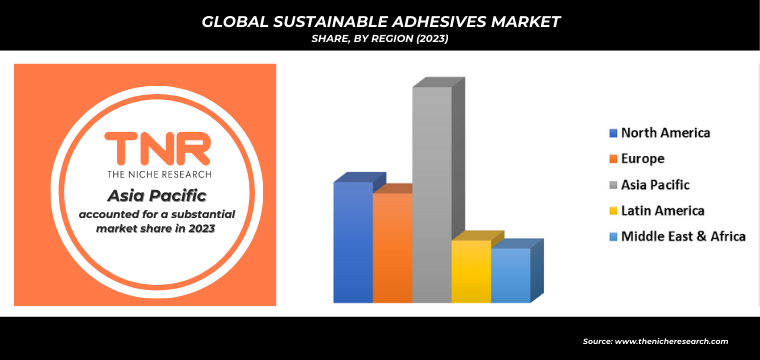
Global Sustainable Adhesives Market Dynamics
Global Sustainable Adhesives Market Growth Driver:
The global sustainable adhesives market is driven by increasing environmental awareness and stringent regulations aimed at reducing carbon footprints and volatile organic compound (VOC) emissions. Industries are increasingly adopting eco-friendly adhesives to meet sustainability goals, particularly in sectors like packaging, construction, and automotive. Technological advancements in bio-based and water-based adhesives are enhancing product performance while reducing environmental impact. Consumer demand for green products and the growing emphasis on circular economy practices further propel market growth. Additionally, government incentives and corporate sustainability initiatives are encouraging the development and adoption of sustainable adhesive solutions.
Global Sustainable Adhesives Market Restraint:
The global sustainable adhesives market faces restraints, primarily due to the higher costs associated with developing and producing eco-friendly adhesives compared to traditional alternatives. Limited availability and variability in the performance of bio-based raw materials can also hinder market growth. Additionally, transitioning from conventional to sustainable adhesives requires significant investment in research, development, and process adjustments, posing challenges for small and medium-sized enterprises (SMEs). Regulatory compliance and certification processes, while necessary, can be time-consuming and costly, further slowing market adoption. Consumer skepticism regarding the performance and durability of sustainable adhesives compared to conventional options may also impact growth.
Global Sustainable Adhesives Market Opportunity:
The global sustainable adhesives market presents significant opportunities, particularly in the development of advanced bio-based and low-VOC formulations that meet both performance and environmental standards. Growing demand for sustainable packaging solutions, driven by the e-commerce boom and consumer preference for eco-friendly products, offers a substantial growth avenue. Additionally, increasing investments in green building projects and renewable energy sectors create new markets for sustainable adhesives. Collaborations between adhesive manufacturers and end-use industries to develop tailored solutions can enhance market penetration. Expanding government initiatives and corporate sustainability goals globally are also expected to drive innovation and market expansion.
Global Sustainable Adhesives Market Threat:
The global sustainable adhesives market faces threats from economic uncertainties that could impact investment in green technologies and slow down market growth. Fluctuations in raw material prices, especially for bio-based inputs, could affect profit margins and market stability. The competitive landscape is also intensifying, with traditional adhesive manufacturers potentially resisting the shift to sustainable alternatives. Additionally, advancements in alternative bonding technologies, such as mechanical fasteners and welding, could pose a threat to adhesive market growth. Moreover, regulatory changes or delays in implementing sustainability-focused legislation could reduce the urgency for industries to adopt sustainable adhesives, impacting market momentum.
Competitive Landscape
The global sustainable adhesives market is highly competitive, with key players focusing on innovation, strategic partnerships, and sustainability initiatives. Major companies are investing in bio-based technologies and expanding their product portfolios to meet growing environmental demands.
Some of the players operating in the sustainable adhesives market are
- Arkema
- Artience Co., Ltd.
- Avery Dennison Corporation
- BASF SE
- Dow
- DuPont
- B. Fuller Company
- Henkel AG & Co. KGaA
- Jowat SE
- Paramelt B.V.
- Synthos
- Other Industry Participants
Global Sustainable Adhesives Market Scope
| Report Specifications | Details |
| Market Revenue in 2023 | US$ 2.17 Bn |
| Market Size Forecast by 2034 | US$ 4.25 Bn |
| Growth Rate (CAGR) | 6.3% |
| Historic Data | 2016 – 2022 |
| Base Year for Estimation | 2023 |
| Forecast Period | 2024 – 2034 |
| Report Inclusions | Market Size & Estimates, Market Dynamics, Competitive Scenario, Trends, Growth Factors, Market Determinants, Key Investment Segmentation, Product/Service/Solutions Benchmarking |
| Segments Covered | By Type, By Bonding Technology, By End Use Industry, By Region |
| Regions Covered | North America, Europe, Asia Pacific, Middle East & Africa, Latin America |
| Countries Covered | U.S., Canada, Mexico, Rest of North America, France, The UK, Spain, Germany, Italy, Nordic Countries (Denmark, Finland, Iceland, Sweden, Norway), Benelux Union (Belgium, The Netherlands, Luxembourg), Rest of Europe, China, Japan, India, New Zealand, Australia, South Korea, Southeast Asia (Indonesia, Thailand, Malaysia, Singapore, Rest of Southeast Asia), Rest of Asia Pacific, Saudi Arabia, UAE, Egypt, Kuwait, South Africa, Rest of Middle East & Africa, Brazil, Argentina, Rest of Latin America |
| Key Players | Arkema, Artience Co., Ltd., Avery Dennison Corporation, BASF SE, Dow, DuPont, H.B. Fuller Company, Henkel AG & Co. KGaA, Jowat SE, Paramelt B.V., Synthos |
| Customization Scope | Customization allows for the inclusion/modification of content pertaining to geographical regions, countries, and specific market segments. |
| Pricing & Procurement Options | Explore purchase options tailored to your specific research requirements |
| Contact Details | Consult With Our Expert
Japan (Toll-Free): +81 663-386-8111 South Korea (Toll-Free): +82-808- 703-126 Saudi Arabia (Toll-Free): +966 800-850-1643 United Kingdom: +44 753-710-5080 United States: +1 302-232-5106 E-mail: askanexpert@thenicheresearch.com
|
Global Sustainable Adhesives Market
By Type
- Solvent-based
- EVA Based
- Bio-based
- Others
By Bonding Technology
- Reactive Technology
- Non-Reactive Technology
By End Use Industry
- Packaging
- Construction
- Healthcare
- Consumer Goods
- Automotive
- Textiles
- Paper & Pulp
- Others
By Region
- North America (U.S., Canada, Mexico, Rest of North America)
- Europe (France, The UK, Spain, Germany, Italy, Nordic Countries (Denmark, Finland, Iceland, Sweden, Norway), Benelux Union (Belgium, The Netherlands, Luxembourg), Rest of Europe)
- Asia Pacific (China, Japan, India, New Zealand, Australia, South Korea, Southeast Asia (Indonesia, Thailand, Malaysia, Singapore, Rest of Southeast Asia), Rest of Asia Pacific)
- Middle East & Africa (Saudi Arabia, UAE, Egypt, Kuwait, South Africa, Rest of Middle East & Africa)
- Latin America (Brazil, Argentina, Rest of Latin America)
Report Layout:
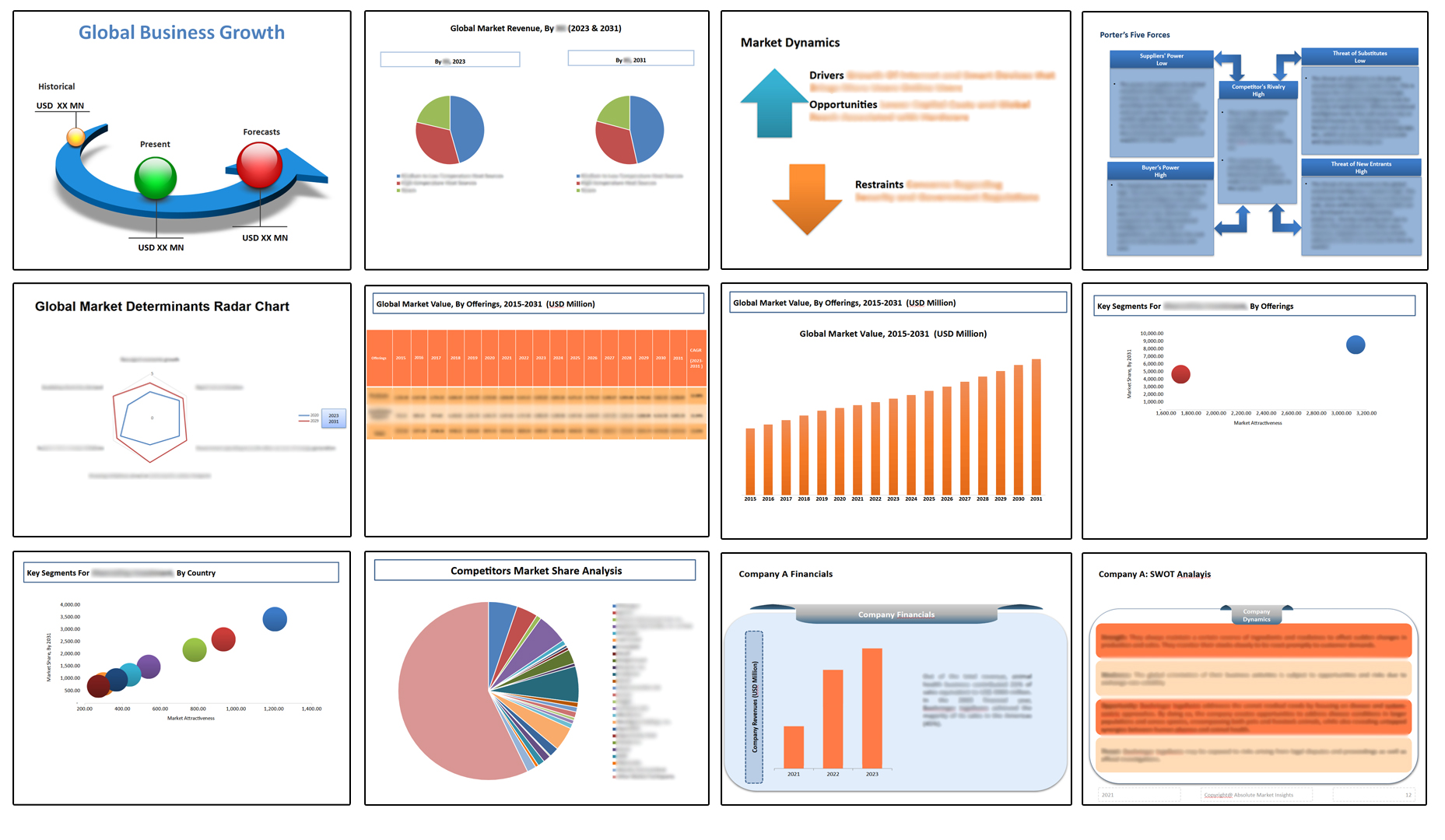
Table of Contents
Note: This ToC is tentative and can be changed according to the research study conducted during the course of report completion.
**Exclusive for Multi-User and Enterprise User.
Global Sustainable Adhesives Market
By Type
- Solvent-based
- EVA Based
- Bio-based
- Others
By Bonding Technology
- Reactive Technology
- Non-Reactive Technology
By End Use Industry
- Packaging
- Construction
- Healthcare
- Consumer Goods
- Automotive
- Textiles
- Paper & Pulp
- Others
By Region
- North America (U.S., Canada, Mexico, Rest of North America)
- Europe (France, The UK, Spain, Germany, Italy, Nordic Countries (Denmark, Finland, Iceland, Sweden, Norway), Benelux Union (Belgium, The Netherlands, Luxembourg), Rest of Europe)
- Asia Pacific (China, Japan, India, New Zealand, Australia, South Korea, Southeast Asia (Indonesia, Thailand, Malaysia, Singapore, Rest of Southeast Asia), Rest of Asia Pacific)
- Middle East & Africa (Saudi Arabia, UAE, Egypt, Kuwait, South Africa, Rest of Middle East & Africa)
- Latin America (Brazil, Argentina, Rest of Latin America)
The Niche Research approach encompasses both primary and secondary research methods to provide comprehensive insights. While primary research is the cornerstone of our studies, we also incorporate secondary research sources such as company annual reports, premium industry databases, press releases, industry journals, and white papers.
Within our primary research, we actively engage with various industry stakeholders, conducting paid interviews and surveys. Our meticulous analysis extends to every market participant in major countries, allowing us to thoroughly examine their portfolios, calculate market shares, and segment revenues.
Our data collection primarily focuses on individual countries within our research scope, enabling us to estimate regional market sizes. Typically, we employ a bottom-up approach, meticulously tracking trends in different countries. We analyze growth drivers, constraints, technological innovations, and opportunities for each country, ultimately arriving at regional figures.Our process begins by examining the growth prospects of each country. Building upon these insights, we project growth and trends for the entire region. Finally, we utilize our proprietary model to refine estimations and forecasts.
Our data validation standards are integral to ensuring the reliability and accuracy of our research findings. Here’s a breakdown of our data validation processes and the stakeholders we engage with during our primary research:
- Supply Side Analysis: We initiate a supply side analysis by directly contacting market participants, through telephonic interviews and questionnaires containing both open-ended and close-ended questions. We gather information on their portfolios, segment revenues, developments, and growth strategies.
- Demand Side Analysis: To gain insights into adoption trends and consumer preferences, we reach out to target customers and users (non-vendors). This information forms a vital part of the qualitative analysis section of our reports, covering market dynamics, adoption trends, consumer behavior, spending patterns, and other related aspects.
- Consultant Insights: We tap into the expertise of our partner consultants from around the world to obtain their unique viewpoints and perspectives. Their insights contribute to a well-rounded understanding of the markets under investigation.
- In-House Validation: To ensure data accuracy and reliability, we conduct cross-validation of data points and information through our in-house team of consultants and utilize advanced data modeling tools for thorough verification.
The forecasts we provide are based on a comprehensive assessment of various factors, including:
- Market Trends and Past Performance (Last Five Years): We accurately analyze market trends and performance data from preceding five years to identify historical patterns and understand the market’s evolution.
- Historical Performance and Growth of Market Participants: We assess the historical performance and growth trajectories of key market participants. This analysis provides insights into the competitive landscape and individual company strategies.
- Market Determinants Impact Analysis (Next Eight Years): We conduct a rigorous analysis of the factors that are projected to influence the market over the next eight years. This includes assessing both internal and external determinants that can shape market dynamics.
- Drivers and Challenges for the Forecast Period:Identify the factors expected to drive market growth during the forecast period, as well as the challenges that the industry may face. This analysis aids in deriving an accurate growth rate projection.
- New Acquisitions, Collaborations, or Partnerships: We keep a close watch on any new acquisitions, collaborations, or partnerships within the industry. These developments can have a significant impact on market dynamics and competitiveness.
- Macro and Micro Factors Analysis:A thorough examination of both macro-level factors (e.g., economic trends, regulatory changes) and micro-level factors (e.g., technological advancements, consumer preferences) that may influence the market during the forecast period.
- End-User Sentiment Analysis: To understand the market from the end-user perspective, we conduct sentiment analysis. This involves assessing the sentiment, preferences, and feedback of the end-users, which can provide valuable insights into market trends.
- Perspective of Primary Participants: Insights gathered directly from primary research participants play a crucial role in shaping our forecasts. Their perspectives and experiences provide valuable qualitative data.
- Year-on-Year Growth Trend: We utilize a year-on-year growth trend based on historical market growth and expected future trends. This helps in formulating our growth projections, aligning them with the market’s historical performance.
Research process adopted by TNR involves multiple stages, including data collection, validation, quality checks, and presentation. It’s crucial that the data and information we provide add value to your existing market understanding and expertise. We have also established partnerships with business consulting, research, and survey organizations across regions and globally to collaborate on regional analysis and data validation, ensuring the highest level of accuracy and reliability in our reports.


